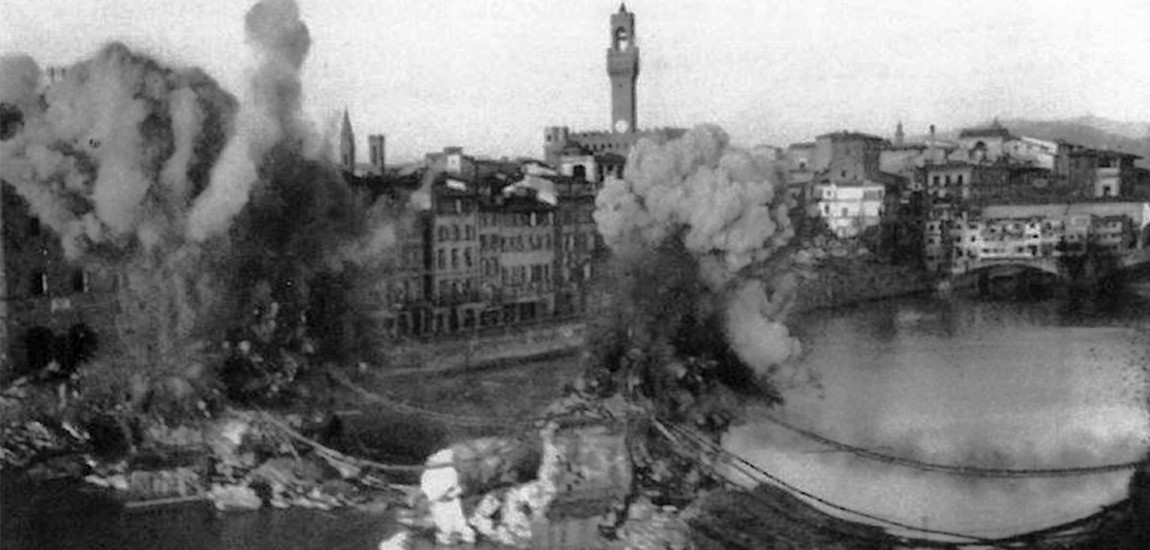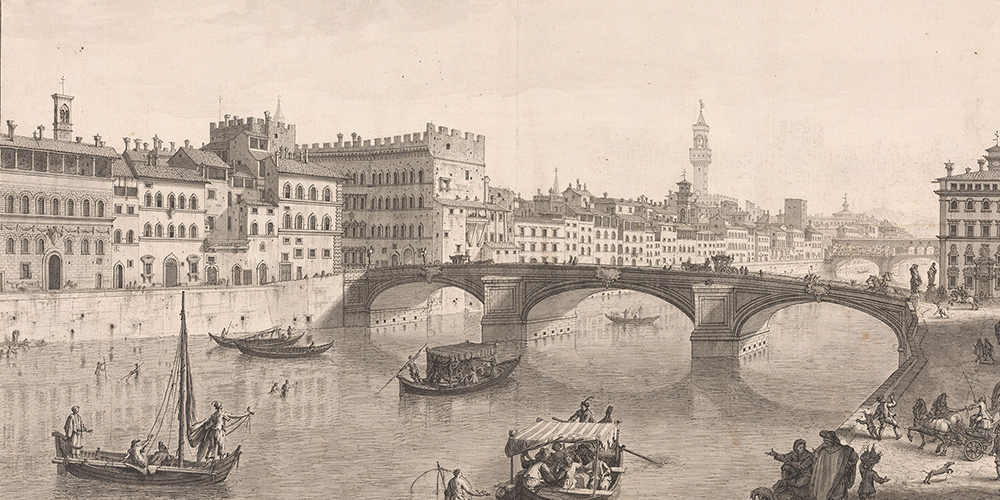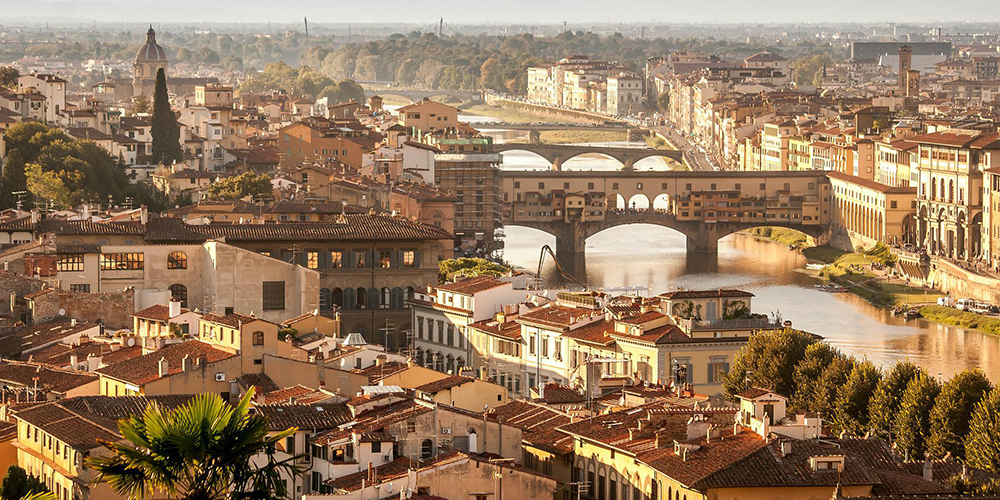
When the Nazis bombed the bridges of Florence
August 3, 1944, Florence is still occupied by the Nazis. It’s been almost a year, the Allies are expected to send help any day now, and rumor has it that, knowing this, the Germans want to destroy the Florentine bridges to cut off access routes.
On
July 30, everyone who lives in the area surrounding the Arno River is evacuated
and forced to seek refuge in Palazzo
Pitti. 4.000 to 6.000 people find shelter there, filling the beautiful
rooms of the palace with mattresses, pots and personal belongings.
It is another hot summer in Florence, and the refugees cool down by bathing in
the fountains of the Boboli Gardens while waiting for liberation, wondering
what will be the fate of their beloved city.
What happens is, unfortunately, what they had foreseen: in the night between the 3rd and 4th of August, the Nazis blow up 5 of
the 6 Florentine bridges. The only one spared is Ponte Vecchio.
The
first explosion happens around 10 p.m. and more follow until 5 in the morning,
while a few daring citizens braves the curfew and climbs on their roofs to
watch, helpless, as century old bridges go down in smoke.
The last bridge to fall is Ponte Santa
Trìnita, which they called “the most beautiful bridge in the world”. Built
by Bartolomeo Ammannati between 1567
and 1571, and designed by none less than Michelangelo,
Ponte Santa Trìnita was the oldest
elliptic arch bridge in the world, built so well that it took three
detonations to make it fall. The first one barely made it shake.
A catastrophic loss for the heritage of Florence.
Afterwards, the bridge is rebuilt using original materials recovered from the
river below, but it will never be the same again.

The Arno River and the Ponte Santa Trinita (1744 circa), Giuseppe Zocchi
The Florentines, of course, did try to prevent this disaster. The partisan
soldiers attempted to cut the wires of the mines that were set to detonate at the
base of the bridges, and bravely fought the Germans. However, little could be
done in the end, and the bridges went down.
All but one. Ponte Vecchio miraculously
survived. The reasons why this was have been much discussed. Apparently, it
all started with Gerhard Wolf, a German official, to whom a marble plaque was
dedicated and put on the bridge.
Mr. Wolf did not wish for Florence to be destroyed, so he started a
correspondence with his long-time friend Rudolf Rahn, a German Ambassador to
Italy, asking hm for help. It was Rahn himself that brought up the possibility
of sparing Florence from bombings to Hitler during a meeting. The Fuhrer, who
had taken a tour of the city and had appreciated its beauty, told Rahn that he
had his permission to do whatever possible to protect Florence’s heritage. This
fueled the belief that it was Hitler who saved Ponte Vecchio, as he simply did
not want to destroy such a beautiful bridge.
However it is only partially true. What played a major role in the destiny of Florence’s most famous bridge, is the fact that Ponte Vecchio was too narrow for the American tanks to cross it and it would not have been able to sustain their weight anyways.
In
the end, there was no need for the Germans to blow the bridge as they retreated,
and Hitler himself - apparently - had no intention of destroying a city rich in
history and beauty such as Florence without good reason.
We may never know the whole truth about how it went, but whatever the real
reason was that allowed Ponte Vecchio to remain intact to this day, we can’t
help but feel immensely grateful.




